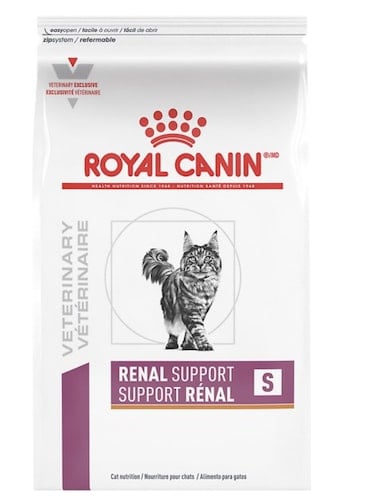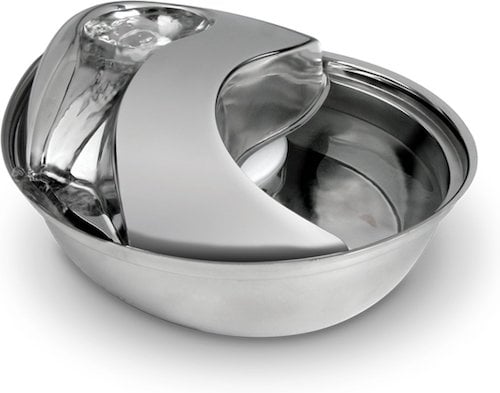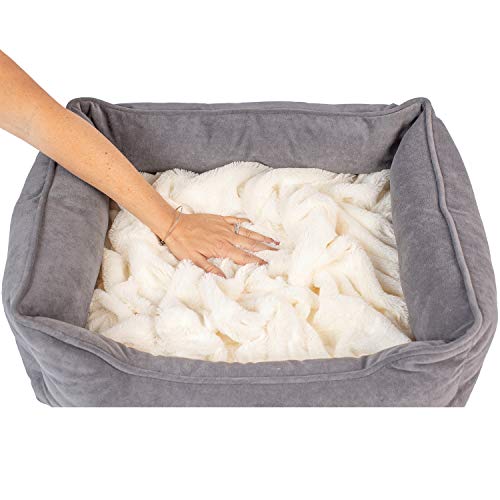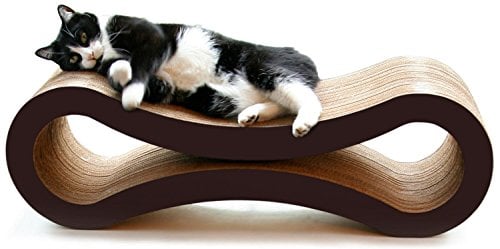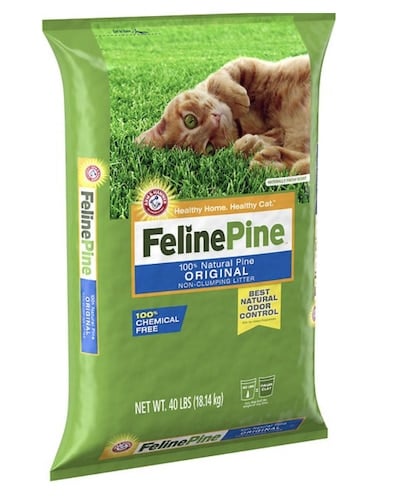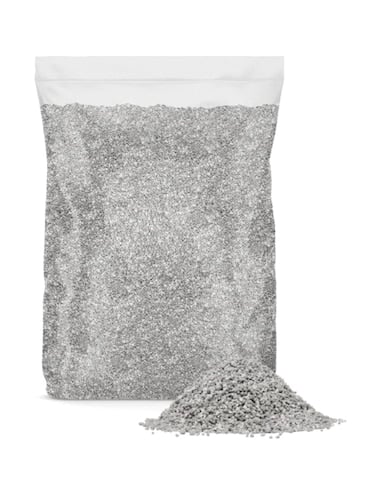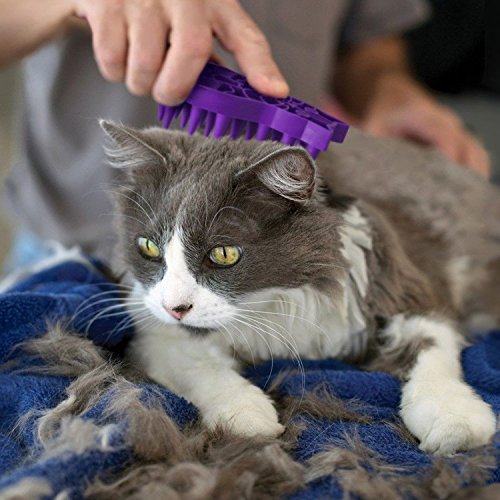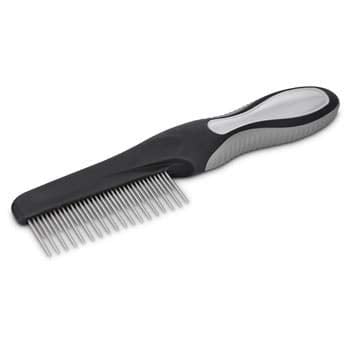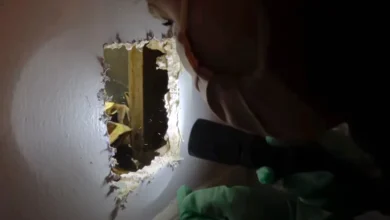10 Sanity-Saving Products for Households with Senior Cats
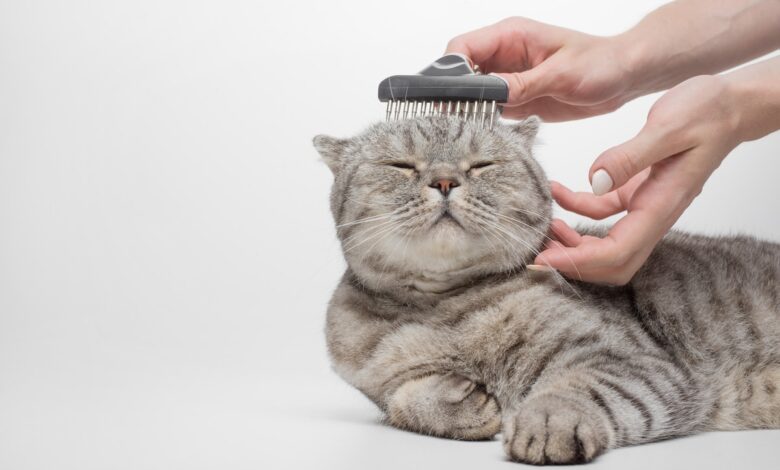
- This post contains affiliate links. Read more here.
- Not a substitute for professional veterinary help.
Your senior cat has given you more than a decade of entertainment, adventure, and love—and now they need some extra attention from you. An annual vet visit (or even a visit every six months) will help you keep track of any special dietary needs or medications. But as your cat’s best friend, you are the one most likely to spot—and deal with—changes in mobility, litter box use, or grooming. You are also the one who will notice if your cat’s hearing or vision is reduced. This can be overwhelming, both in terms of emotional stress and household logistics.
We’re with you! Many of us here at Rover have senior cats. I’ve got six of them: Three lively ones in their early teens, whose health issues are well under control, and three very senior cats with definite age-related difficulties. Max (18) is going blind and has serious arthritis and a good bit of kitty dementia. Zoe (18) has spinal arthritis and early-stage kidney disease. Toby (24) has neuropathy in his paws and slight deafness.
I’ve experimented with a lot of products that promise to help keep my kitties healthy and comfortable—while saving my sanity. It turns out that some of these “senior cat” products are pretty ridiculous (at least, my cats thought so). But, luckily, there are others that turn out to be timesavers for me and life-enhancers for my cats. So let’s look at some of the challenges senior cats face, and see what might work for your household.
Best Bites: Cat Food for Senior Cat
Do senior cats need special food? Not necessarily. According to research reported in the Tufts Veterinary school newsletter, most cat foods branded as “senior” are practically the same as regular foods in terms of nutrition. That’s a surprise—but good news for most of us. Provided your vet gives your senior cat a clean bill of health, you are perfectly fine serving your kitty whatever cat food they enjoy—be it regular adult cat food or a food labeled “senior.”
That said, there are instances when your vet may recommend a special diet for your older cat.
- If your senior cat is overweight, your vet may suggest a lower-calorie cat food. Obesity can increase your cat’s risk for cancer, diabetes, heart disease, osteoarthritis, and other health problems. It can also lead to a 2.8-fold increase in mortality, especially among older cats (age 8 to 12 years).
- If your elderly cat is losing weight or refusing to eat, it’s important to consult your vet to find out why. There may be a serious underlying cause (such as hyperthyroidism). It could also be an age-related problem—if your cat is in pain from a chronic condition such as arthritis, or is losing their sense of smell, they may be less interested in food. Your vet may suggest that you try one of the foods for cats that need to gain weight.
- Three out of 10 geriatric cats (age 15 or older) will receive a diagnosis of chronic kidney disease (also called renal disease). Once the disease begins, a cat’s kidneys have trouble removing waste products, such as proteins and phosphorus. These remain in the bloodstream and can cause problems ranging from high blood pressure to anemia. If your kitty has been diagnosed with kidney disease, your vet may suggest that your cat eat foods that are lower in phosphorus. Some “kidney diet” foods require a vet’s prescription for purchase.
My cats with kidney issues have always turned up their noses at the renal diet wet foods and insisted on less-healthy fare—which has been stressful for me. To my relief, Zoe loves the Royal Canin kidney diet dry foods. These come in three flavors: Aromatic, Flavorful, and Savory.
The Savory (“S”) flavor of Royal Canin’s dry cat food for cats with kidney disease is a low-phosphorus recipe with a long list of vitamins, minerals, and even botanicals—all of it designed to slow the progression of kidney disease. The Savory flavor (with an “S” on the package) is square kibble with a flavor profile intended to attract cats. If your cat has been turning up their nose at wet kidney-diet foods, it’s worth trying a small package of this food. (Note: Vet’s prescription required.)
Shop on Chewy Shop on Petco Shop on Amazon
Water Fountains for Senior Cats
Several diseases that affect older cats, including kidney disease and hyperthyroidism, have among their symptoms increased thirst. Zoe, with kidney disease, drinks quite a bit of water. Max, who was treated for hyperthyroidism, still likes water. They shared a large (three-cup) water bowl that had to be refilled daily—and washed, because Max is a complete slob who insists on dipping his often-dirty paws into the water.
After testing a few water fountains, I found one that was interesting enough for the cats (Zoe loves running water) and quiet enough for us. Max and Zoe immediately transferred their interest from the water bowl to the water fountain. And, yes, Max insists on washing his paws in the fountain as well as drinking from it.
A word of caution: Fountain filters collect all sorts of horrible gunk, so allowing your cat to drink water that has circulated through a dirty filter is not healthy. To keep a fountain clean, you’ll have to commit to taking it apart and washing it and the filter on a weekly basis.
You’ll need to buy filter replacements and install a fresh filter once or twice a month (depending on the fountain’s instructions). If you aren’t up for the cleaning and the filter costs, water bowls are a better choice.
At 9.5 by 11.5 inches (about the size of a dinner plate) this small, durable metal fountain is ideal for one or two cats. It’s easy to assemble and relatively easy to clean. The pump is quiet as long as you keep the fountain well-filled. If you replace the filter every two to four weeks as recommended, you’ll be spending about $50-60 a year on filters.
Shop on Chewy
Find on Amazon
Find on Petco
Room to Snooze: Cat Beds for Senior Cats
It is not at all uncommon for elderly cats to have arthritis. This stiffness makes it difficult for them to curl up in tiny cat beds, especially ones with high “dish style” sides. I often find our senior cats stretched out on my bed or the sofa. I was able to lure them back into their own beds by purchasing large beds—including the Petfusion Calming Cuddler dog bed (shown below).
If your senior cat seems to be craving heat or seeks heat to relieve arthritis pain, a spacious heated bed can be an option (as long as there is also an unheated sleeping area available as well). Another good choice for comfort (and heat retention) is a big fluffy puff—a type of bed that’s also very fashionable. Our two top picks:
This designer plug-in cat bed has comfy bolstered sides and some great rich colors (mocha or deep blue). I like it because the oval model is big enough (22 by 16 inches) to accommodate my chonkiest cat, Max. The internal heating pad is removable so you can machine wash the plush bed (use the gentle cycle, cold water).
Find on Amazon
Find on Chewy
Find on Petco
Zoe, who has spinal arthritis, could no longer curl up in our small cat beds. I’d find her stretched out on the bed or the sofa instead. When someone gifted me this dog bed with a “memory foam” mattress and supportive bolsters, Zoe immediately took to it. The mattress is protected by a waterproof cover that can be removed so that the bed can be washed.
Accessible Perches: Cat Perches for Senior Cats
Problems with vision, mobility, and energy may lead your elderly cat to stop using the tall cat trees that are so appealing to young cats and kittens. If your cat tree is now going unused, you may be looking for an easy-access structure that will at least get your elderly cat off the floor.
Last year our house was filled with easy-access cat trees—short trees with lots of steps, none of which seemed to appeal to our three oldest cats. Toby, 25, has neuropathy in his paws and likes large, flat surfaces (benches, tables, chairs, and sofas). Max, who is going blind at 18, has never used cat trees and shows no interest in learning. Zoe, 18, who used to enjoy cat trees, has abandoned them.
While these three were definitely unimpressed by the “senior” cat trees, Toby and Zoe fell in love with a big cat scratcher/bed combination that elevates them off the floor. In fact, they started fighting over it and I had to buy two of them. Check it out:
This big honkin’ scratcher provides a safe, slightly elevated lounging space that senior cats can easily reach. It’s 34 inches long, 10.5 inches high, and 10.5 inches wide. There are scratchers on the market that use the same design, but the PetFusion scratcher is known for its durability. The one my younger cats use as a scratcher lasts about a year. The one Toby and Zoe use as a lounger is three years old and still going strong.
Getting a Paw Up: Steps for Senior Cats
If your senior cat is struggling to get on the sofa or bed, the answer might seem to be special steps. But when I tried steps for senior pets, none of them impressed me much (plus, they looked ugly). What has worked for my cats is a simple footstool or ottoman, ideally one with a stable base and a fabric top (to prevent slipping). A footstool looks much nicer next to the couch than brown carpeted steps or ramps.
Better Litter: Boxes and Litters for Senior Cats
When Zoe started peeing over the edge of the litter box, I realized I needed to figure out some solutions fast before our floors were ruined. The first, stop-gap solution was placing doggy pee pads around the sides of the box to absorb liquid and prevent it from getting under the litter box.
But I wanted something to keep Zoe’s output inside the box. A larger litter box (giving her more room to get in and turn around) reduced the frequency of her “misses,” but not completely. The best solution turned out to be a box with very high sides (6.5 inches), including a fairly high entrance.
With Max, the problem was not the box but the litter. He and Zoe often use the same litter box. Zoe would pee, and before the clumping litter could absorb all the moisture, Max would step in the wet, gooey litter and then emerge from the box with wet litter on his paws. When it clumped, he looked as though he were wearing concrete boots. This was not safe or healthy (I didn’t want him to lick it off), and it could not have been comfortable. I also didn’t want to have to soak and clean his paws every day.
We came up with two answers. The first is pine pellet litter. Zoe loves it, so her puddles are reduced. Maintenance is easy: scoop daily to remove solids, and then stir the absorbent pine pellets. Unfortunately, Max declined to use the pine. This led me to a great (if somewhat pricey) solution for him: the fine-texture, fast clumping clay litter from the Kitty Poo Club. It rarely sticks to Max’s paws. Bonus: Both the pine pellet litter and Kitty Poo Clay are amazing at absorbing cat smells.
At 22 x 16 x 6.5 inches, this box gives your older, arthritic cat plenty of room. The relatively high sides should minimize accidents. The durable plastic is easy to clean, and this is one of the most affordable big pans on the market—even the jumbo size.
Shop on Chewy
Shop on Amazon
Shop on Petco
This long-lasting litter made of natural pine pellets is easy to maintain. Just scoop solid wastes and stir the highly absorbent pellets. It has a pleasant, natural pine odor and is very long-lasting. Most—but not all—cats are willing to use pellets.
Shop on Chewy
Shop on Petco
Shop on Amazon
This unscented, fine-texture clay litter gets top marks for fast clumping and odor control. It’s easy to scoop and resists tracking. It’s mail-order only. Buy it with, or without, one of the Kitty Poo Club’s recyclable cardboard litter boxes. The price is about the same as those of the premium unscented clumping litters at a pet specialty store. Tip: Look under the “Products” section of their website to find a la carte bags of litter.
Keeping Trimmed: Grooming Tools for Senior Cats
I have to confess that I’ve never been much for home grooming, but as the cats aged, I realized I needed to up my skills—or I’d have to hire a live-in groomer. Max is a part-Siberian tabby with three layers of hair. As his arthritis got worse, he pretty much stopped grooming himself and quickly became a nightmare of mats.
So I take him to a cats-only groomer two or three times and year, and in between, I work on him with tools recommended by Certified Master Groomer Rose Silcox-Rither. These inexpensive tools are effective and safe. The ZoomGroom is for brushing, which the cats just love. After the ZoomGroom frees loose hair, I work gently with the Undercoat Comb to remove the hair. Zoe’s fur tends to feel a bit greasy, so gently rubbing her fur with a damp washcloth before combing can help fluff her up a bit.
The inexpensive ZoomGroom from toy company Kong is the must-have tool for cat grooming—in part because cats love it. Use it to massage loose hair up to the surface—and to comb hair if your cat refuses to deal with other brushes or tools.
This small cat-specific comb will make for a comfortable grooming experience. The teeth have rounded tips that prevent injury to the cat, and the rubber handle is easy to grip.
Further Reading

